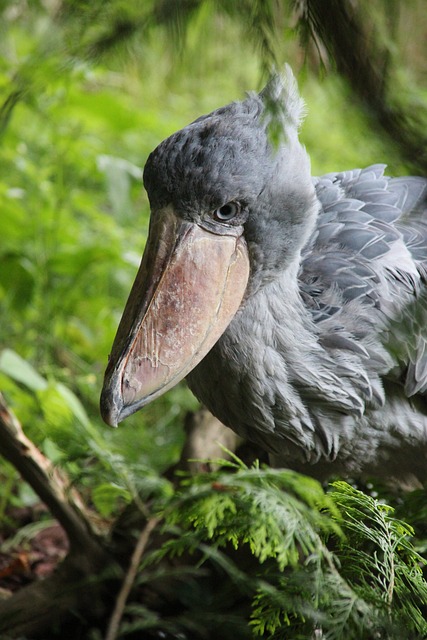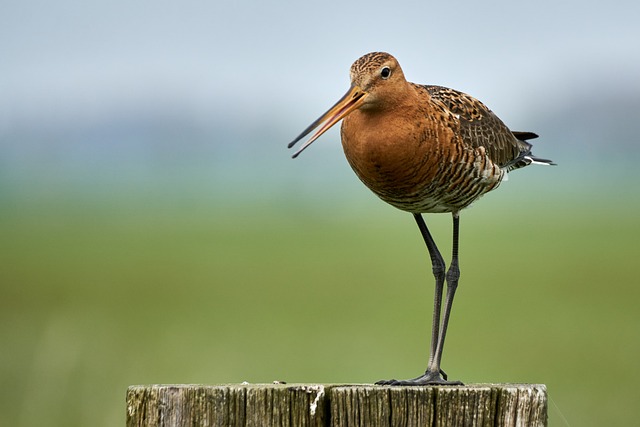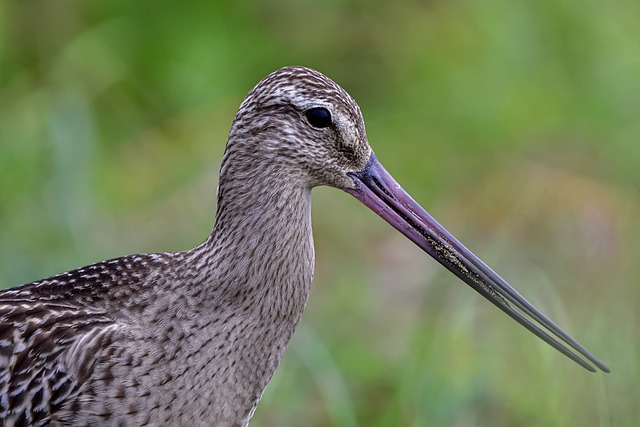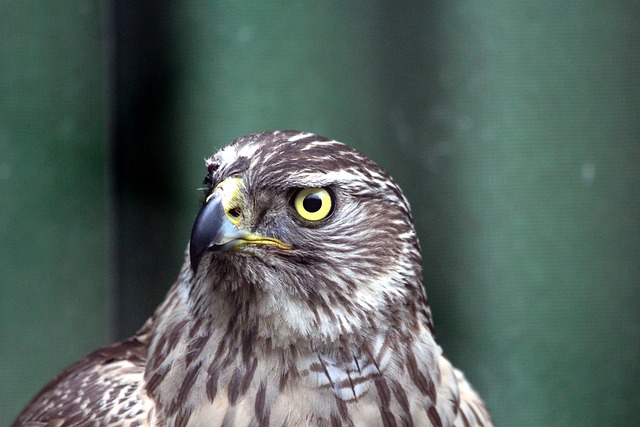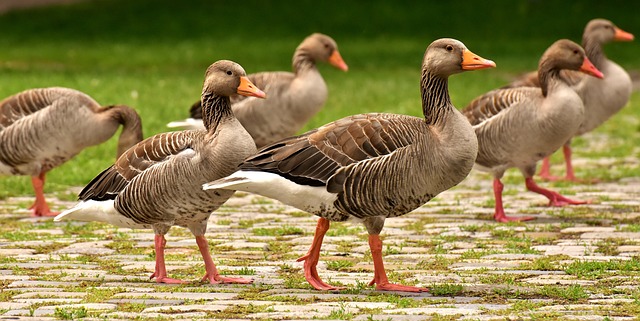The mysterious and elusive nature of owls has captured the fascination and curiosity of humans for centuries. These nocturnal creatures are known as the “Masters of the Night Sky” and are often associated with wisdom and magic. In this article, we will delve into the world of owls and uncover 5 mind-blowing facts about these fascinating birds.
From their exceptional hunting abilities to their diverse physical characteristics and impressive intelligence, owls have captivated our imaginations and inspired countless stories and beliefs. But beyond their mystical reputation, owls are also facing threats to their populations, making it crucial for us to understand and appreciate these magnificent creatures.
So let's spread our wings and embark on a journey to unveil the mysteries of owls.
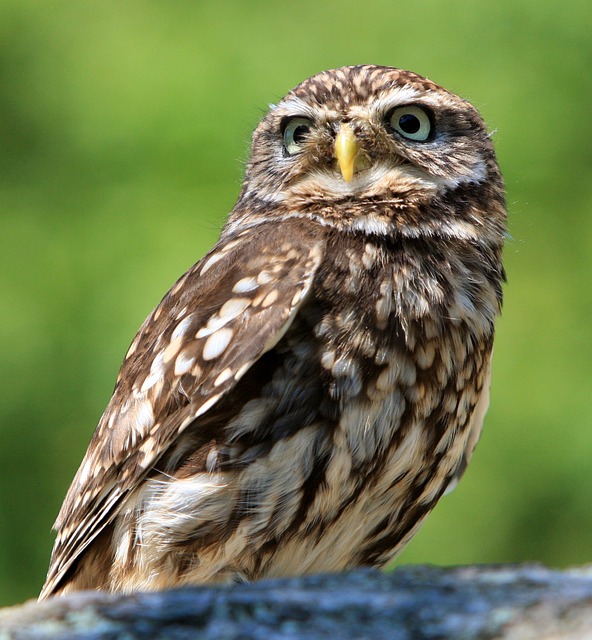
Owls: The Silent Hunters of the Night
When we think of owls, one of the first things that come to mind is their ability to hunt in the dark. These majestic creatures are known for their silent flight and exceptional vision, making them masters of the night sky. In this section, we will delve deeper into the unique hunting abilities of owls and how they make them successful predators.
Silent Flight:
One of the most fascinating aspects of owls is their silent flight. Unlike other birds, owls have specialized feathers that allow them to fly silently through the night. These feathers have a soft, fringed edge that reduces the noise of their wings flapping. This allows owls to sneak up on their prey without being detected, giving them a huge advantage when hunting.
Exceptional Vision:
In addition to their silent flight, owls also have exceptional vision. Their large eyes are specially designed to gather and process light, allowing them to see in low light conditions. This gives them an advantage over their prey, who may not be able to see them coming in the dark. Owls also have a wide field of vision, allowing them to spot prey from different angles.
Adaptations for Hunting:
Owls have adapted to hunt in various environments, from open fields to dense forests. The different owl species have unique features that help them hunt in their specific environment. For example, the barn owl has excellent hearing and can pinpoint the exact location of its prey using sound alone. The snowy owl, on the other hand, has thick feathers on its feet to help it keep warm while hunting in the Arctic tundra.
Success in Complete Darkness:
One of the most impressive feats of owls is their ability to hunt in complete darkness. They do this by relying on their exceptional hearing and vision, as well as their sharp talons and powerful beaks. Some owl species also have asymmetrical ears, which help them locate prey accurately, even in the dark.
It is estimated that owls can catch and consume up to 1,000 prey animals in a year. This is because their hunting abilities are not limited to just one type of prey; they can hunt a variety of small animals, including rodents, insects, and even other birds.
In conclusion, owls are truly the silent hunters of the night. Their unique abilities, such as silent flight and exceptional vision, make them successful predators even in complete darkness. With adaptations for hunting in different environments and the ability to hunt a variety of prey, it's no wonder that owls are at the top of the food chain in their ecosystems. But owls are not just skilled hunters, they also possess many other fascinating qualities, which we will explore in the following sections.
A Variety of Shapes and Sizes
Owls are known for their distinctive appearance and fascinating characteristics. With over 200 species found all over the world, they come in a wide variety of shapes and sizes. These majestic birds have captured the imagination of humans for centuries, with their unique physical features and hunting abilities. In this section, we will explore the diversity of owl species and their remarkable physical characteristics.
One of the most striking features of owls is their large eyes. They are known to have some of the largest eyes relative to their body size among all birds. Their eyes are fixed in their sockets, making them unable to move their eyes in their sockets like humans. However, they have the ability to rotate their heads up to 270 degrees, giving them almost a 360-degree view of their surroundings. This allows them to spot prey or potential threats from all directions.
Another distinct feature of owls is their facial disc. This is a circular arrangement of feathers around their eyes, which acts as a sound amplifier. It helps to funnel sound towards their ears, allowing them to accurately locate prey based on sound. This adaptation is vital for owls, as they are primarily nocturnal hunters and rely on their hearing to find food in the dark.
In addition to their eyes and facial disc, owls also have unique feathers that contribute to their physical appearance and hunting abilities. Their feathers are soft, allowing them to fly silently, making them one of the quietest birds of prey. This silent flight is possible due to special adaptations on their wings, such as serrated feathers and a soft fringe on the leading edge of their wings. These features help to break up air turbulence and reduce noise, making them incredibly stealthy hunters.
When it comes to size, owls range from the tiny elf owl, which is only 5 inches tall, to the Eurasian eagle owl, which can reach up to 2 feet in height. The smallest owl in the world, the elf owl, weighs only 1.4 ounces, while the largest owl, the Eurasian eagle owl, can weigh up to 10 pounds. This vast difference in size is due to their diverse habitats and prey preferences. Smaller owls are found in open areas and feed on insects and small rodents, while larger owls inhabit forests and prey on larger animals.
Apart from their physical characteristics, owls also have a wide variety of color patterns and markings. Their plumage can range from shades of brown and gray to white, black, and even bright orange. This coloration helps them blend in with their surroundings, making them excellent at camouflage. For example, the snowy owl has white feathers, allowing it to blend in with the snowy landscapes it inhabits, while the tawny owl has brown feathers that blend in with tree bark, helping it to remain hidden from predators.
In conclusion, the diversity in shape, size, and physical features of owls is truly remarkable. It is a testament to their ability to adapt to various environments and their unique hunting strategies. From their large eyes and facial disc to their silent flight and camouflage abilities, owls are truly masters of the night sky.
Masters of Camouflage
Owls are truly masters of disguise, and their camouflage abilities are nothing short of remarkable. These nocturnal birds have evolved various adaptations to blend in with their surroundings, making them almost invisible to their prey and predators alike.
One of the most common forms of camouflage among owls is their coloration. Many species of owls have feathers that are mottled with shades of brown, gray, and white, allowing them to blend in seamlessly with the trees and foliage in their habitat. This makes it difficult for their prey to spot them, giving them the element of surprise when hunting.
In addition to their coloration, some owls have specialized feathers that help them blend in even further. For example, the screech owl has small feathers on its wings that resemble tree bark, allowing it to remain hidden while perched on a tree branch. Similarly, the barn owl has soft, fringed feathers that help to reduce the sound of their flight, making them almost completely silent while hunting.
Not only do owls have impressive coloration and feather adaptations, but they also have the ability to change their appearance to match their surroundings. This is known as “cryptic coloration” and is particularly useful for owls that live in areas with seasonal changes. For example, the snowy owl has white feathers during the winter to blend in with the snowy landscape, but its feathers turn brown during the summer to match the tundra.
But camouflage isn't just about blending in with the environment, it's also about breaking up their silhouette. This is where the facial disc of owls comes into play. This unique feature acts as a sort of “sound mirror” that helps to direct and amplify sound towards the owl's ears, allowing them to locate their prey with precision. It also helps to break up their round shape, making them less recognizable to predators.
Aside from their physical adaptations, owls also use their behavior as a form of camouflage. Many species of owls have a habit of roosting in tree cavities or hollowed-out trunks, making them almost invisible to the naked eye. This behavior also helps to protect them from harsh weather conditions and potential predators.
But camouflage isn't just a tool for hunting, it also serves as a means of protection. Owls are often preyed upon by other birds of prey, such as hawks and eagles. Their ability to blend in with their surroundings helps to keep them safe from these predators, allowing them to survive and thrive in their natural habitat.
In conclusion, owls are truly masters of camouflage. Their impressive coloration, specialized feathers, and unique facial disc all work together to make them almost invisible in their surroundings. This not only aids in their hunting abilities but also helps to protect them from potential predators. It's just one of the many fascinating aspects of these enigmatic birds that continue to captivate our imagination.
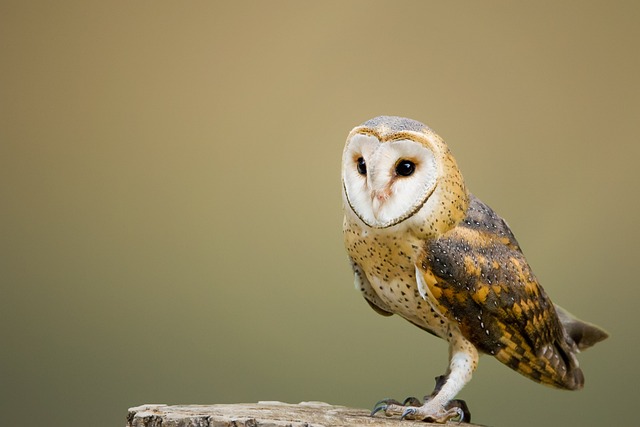
Owls: The Wise Ones
Out of all the creatures in the animal kingdom, owls have always embodied a sense of wisdom and intelligence. With their large, all-seeing eyes and mysterious nocturnal nature, it's no wonder why these birds have been associated with wisdom and knowledge for centuries. In this section, we will delve deeper into the intelligence of owls and explore some fascinating facts about these wise creatures.
One of the main reasons why owls are often seen as wise is their large brain size. Compared to other birds, owls have relatively large brains, which are essential for their complex hunting strategies. These birds of prey are known to have excellent problem-solving skills and are able to adapt to changing environments and prey. They also have exceptional memory, which allows them to remember hunting grounds and prey locations.
Another aspect that showcases the wisdom of owls is their hunting techniques. Unlike other birds, owls have the ability to hunt silently. This is due to their unique feather structure, which helps to muffle the sound of their flapping wings. This silent flight allows them to sneak up on their prey undetected, making them efficient hunters. They also have excellent vision, with some species even being able to see in low light conditions. This combination of silent flight and exceptional vision makes them masters of the night sky.
Owls have also been observed to exhibit problem-solving skills when faced with challenges. For example, some species have been seen using tools to help them hunt, such as using sticks to extract insects from crevices. They have also been known to use decoy tactics, where they will use their wings to create a distraction while swooping in to catch their prey with their sharp talons.
Aside from their hunting abilities, owls also have unique behaviors that showcase their intelligence and adaptability. For instance, some species have been observed to use their facial disc to amplify sounds, making it easier for them to locate prey. They have also been known to change their hunting methods based on the availability of food, showing their ability to adjust and problem-solve in different situations.
In many cultures, owls have been seen as symbols of wisdom and knowledge. In Greek mythology, Athena, the goddess of wisdom, was often depicted with an owl by her side. This association with wisdom has continued throughout history, with owls appearing in literature, art, and folklore as symbols of intelligence and guidance.
However, in some cultures, owls have also been seen as harbingers of death and misfortune. This negative association may stem from the fact that owls are often associated with darkness and the unknown. Nevertheless, the symbolic value of owls remains strong, and they continue to fascinate and intrigue people with their mysterious nature.
In conclusion, owls are truly wise creatures, with their large brains, complex hunting strategies, and unique behaviors. They have captured the interest and imagination of humans for centuries, and their association with wisdom and intelligence is well-deserved. As we continue to learn more about these fascinating birds, we can only marvel at their remarkable abilities and their place as masters of the night sky.
A Symbol of Mystery and Magic
Owls have long been associated with mystery and magic in various cultures around the world. These enigmatic birds of prey have captivated human imagination for centuries, appearing in myths, legends, and superstitions. Their distinct physical characteristics and nocturnal habits have only added to the fascination and intrigue surrounding these creatures. In this section, we will explore the symbolism and folklore surrounding owls, shedding light on the mystical aura that surrounds them.
In many cultures, owls have been seen as symbols of wisdom and intelligence. This association can be traced back to ancient Greece, where the goddess Athena was depicted with an owl as her companion. Athena, the goddess of wisdom, was often portrayed holding an owl or with an owl perched on her shoulder. This connection between owls and wisdom has been reinforced by their large brains and complex hunting strategies. Owls have the ability to plan and carry out elaborate hunting techniques, making them one of the most intelligent birds in the animal kingdom.
But the symbolism of owls is not limited to just wisdom. In some cultures, owls have been viewed as omens of death and misfortune. This belief stems from their nocturnal habits and their ability to fly silently, making them associated with darkness and mystery. In ancient Rome, owls were believed to be harbingers of death, and hearing their hoots was a bad omen. Similarly, in Native American cultures, owls were seen as messengers of death and were often associated with witchcraft and sorcery.
Despite their negative connotations, owls have also been seen as protectors and bringers of good luck in some cultures. The ancient Egyptians revered owls as guardians of the afterlife and symbols of protection. In Japan, owls were considered sacred creatures that brought prosperity and good fortune. In many other cultures, owls have been associated with mystical powers and supernatural abilities, making them a source of fascination and awe.
The superstitions and beliefs surrounding owls have also given rise to many intriguing myths and legends. In Greek mythology, the owl was believed to be a symbol of prophecy and was consulted by the Oracle of Delphi. In Celtic mythology, the goddess Blodeuwedd was turned into an owl as punishment for her betrayal, forever symbolizing the untrustworthiness of the bird. These stories and legends have only added to the mysterious and magical aura of owls.
Unfortunately, the negative associations and superstitions surrounding owls have also led to their persecution and even extinction in some cases. In many cultures, owls have been seen as bad luck and have been killed or used in traditional medicine. This, combined with habitat loss and climate change, has led to a decline in owl populations around the world.
To protect these magnificent creatures, conservation efforts have been put in place, focusing on preserving their habitats and raising awareness about their importance in the ecosystem. Organizations like the World Owl Trust and the International Owl Center are dedicated to educating the public about owls and their conservation. By understanding the symbolism and mythology surrounding owls, we can also appreciate their role in our cultural heritage and work towards their protection.
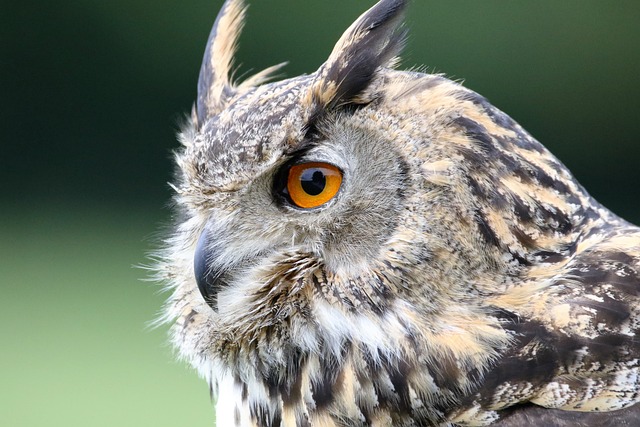
Threats to Owl Populations
The majestic and mysterious nature of owls has captivated humans for centuries, making them a popular subject in folklore and literature. However, these birds of prey are facing numerous threats to their populations, putting their survival at risk. In this section, we will explore the various factors that are contributing to the decline of owl populations and the importance of conservation efforts to protect them.
Habitat Loss:
One of the biggest threats facing owls is the loss of their natural habitat. As human populations continue to expand, forests and other natural habitats are being destroyed to make way for urbanization and agriculture. This destruction of vital habitats disrupts the delicate balance of ecosystems, leaving owls with limited food sources and nesting sites. As a result, many owl species are struggling to find suitable habitats to survive and reproduce.
Human Interference:
Human activities such as logging, mining, and construction also pose a threat to owl populations. These activities not only destroy habitats but also disrupt the natural behaviors of owls, such as hunting and nesting. In addition, owls are often victims of collisions with vehicles and buildings, resulting in injuries or fatalities. As humans continue to encroach on owl habitats, these conflicts will only increase, putting their populations at risk.
Pollution:
The use of pesticides and other chemicals in agriculture has a detrimental effect on owl populations. These chemicals can contaminate the prey that owls feed on, leading to health issues and even death. In addition, pollution can also affect the quality of the air and water, making it difficult for owls to survive in their natural habitats.
To mitigate these threats, conservation efforts are crucial in protecting owl populations. Governments and organizations around the world are working towards preserving and restoring habitats for owls, as well as implementing measures to reduce human interference. Here are some examples of ongoing conservation initiatives for different owl species:
Habitat Restoration:
Efforts are being made to restore and protect the habitats of owls through reforestation, creating protected areas, and reducing human activities in sensitive areas. This allows owls to have access to suitable habitats to hunt and reproduce.
Education and Awareness:
Education and awareness programs are essential in educating the public about the importance of owls and their habitats. By raising awareness, we can encourage people to take action and make changes in their behaviors to reduce the impact on owl populations.
Captive Breeding and Release Programs:
In some cases, captive breeding and release programs are implemented to increase the population of endangered owl species. These programs involve breeding owls in captivity and releasing them into the wild to boost their numbers.
Monitoring and Research:
Research and monitoring efforts help track the population trends of different owl species and identify potential threats. This information is essential in developing effective conservation strategies and making informed decisions.
